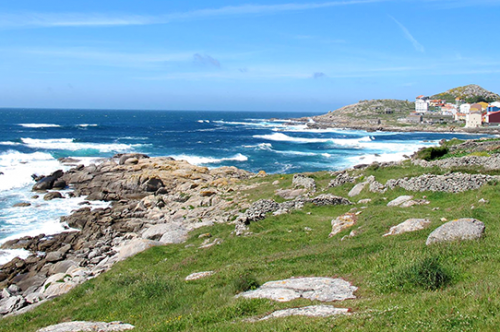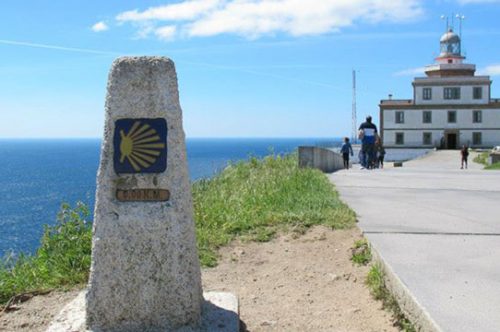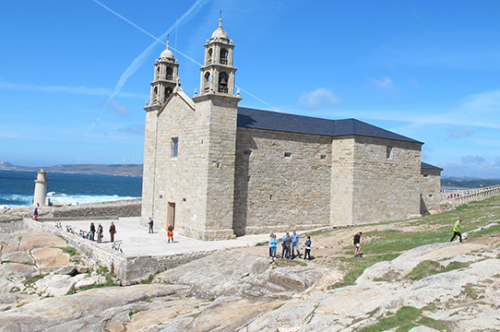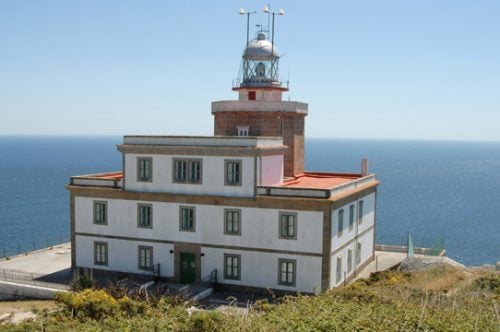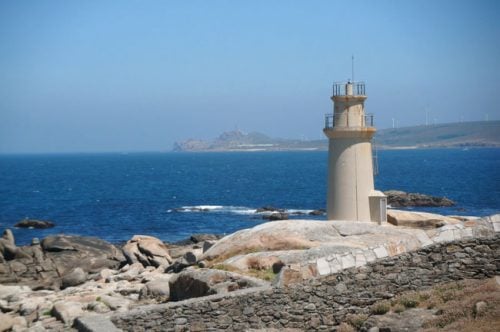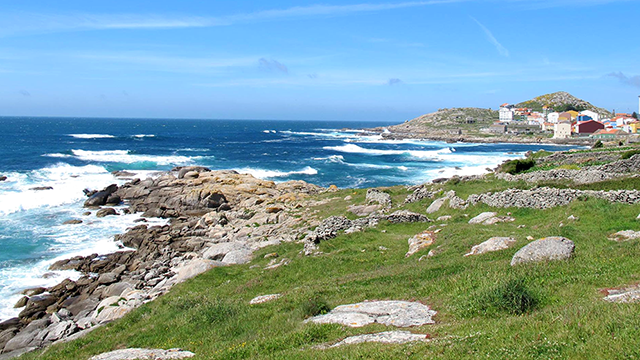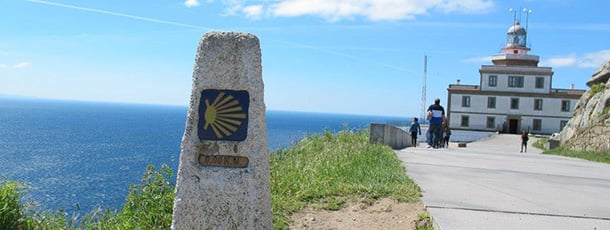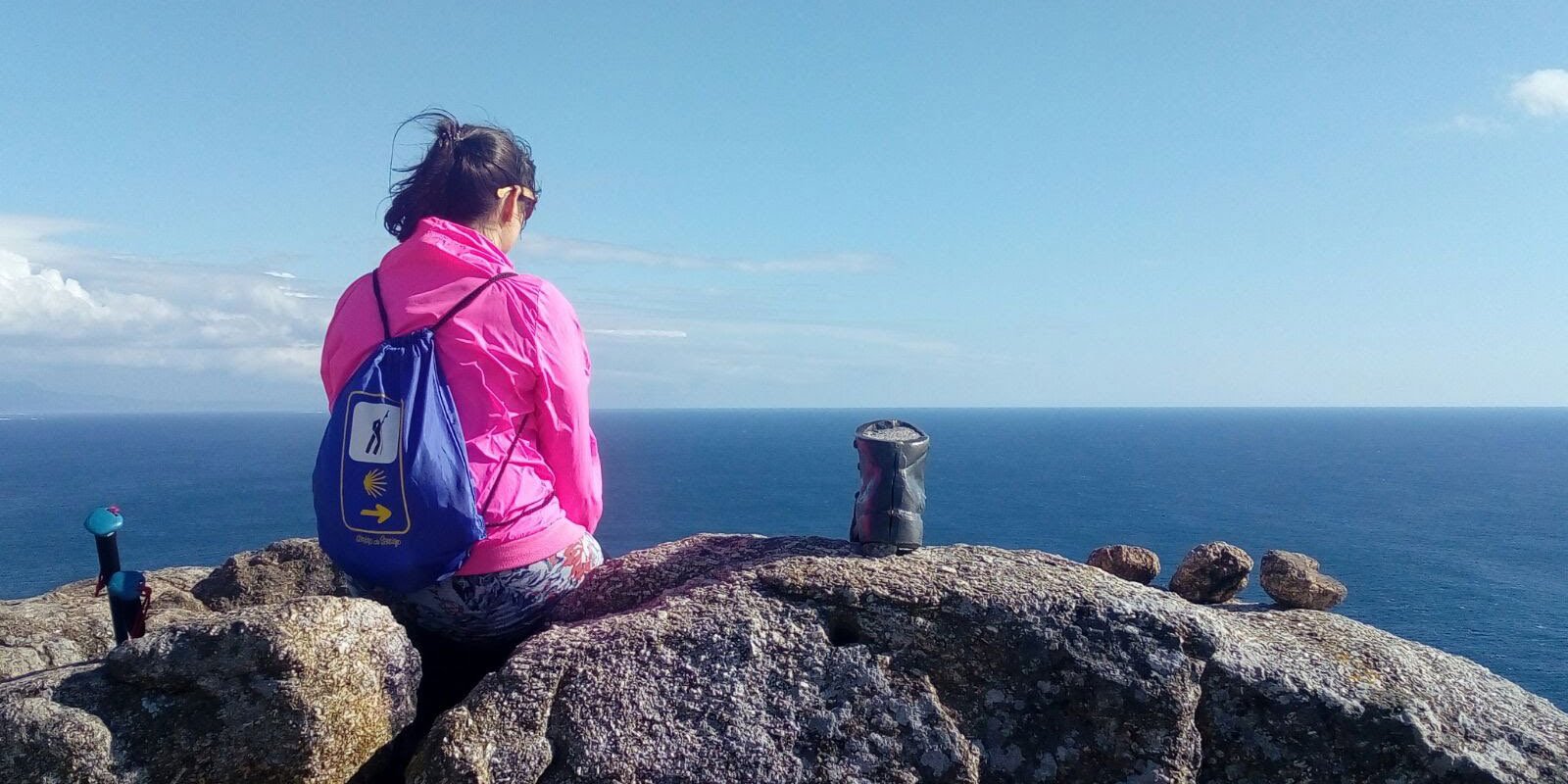The Camino Finisterre
The Camino Finisterre, or Camino de Fisterra, is a truly unique Camino de Santiago route — the only one that starts in Santiago de Compostela and leads pilgrims west to the Atlantic Ocean.
Known as the “Route to the End of the World,” this captivating journey takes you from the spiritual heart of Santiago to Cape Fisterra, once believed to be the edge of the known world. The trail follows Galicia’s dramatic coastline, winding through quiet villages, eucalyptus forests, and open landscapes before reaching the sea — a fitting finale for those seeking reflection and renewal after completing the Camino.
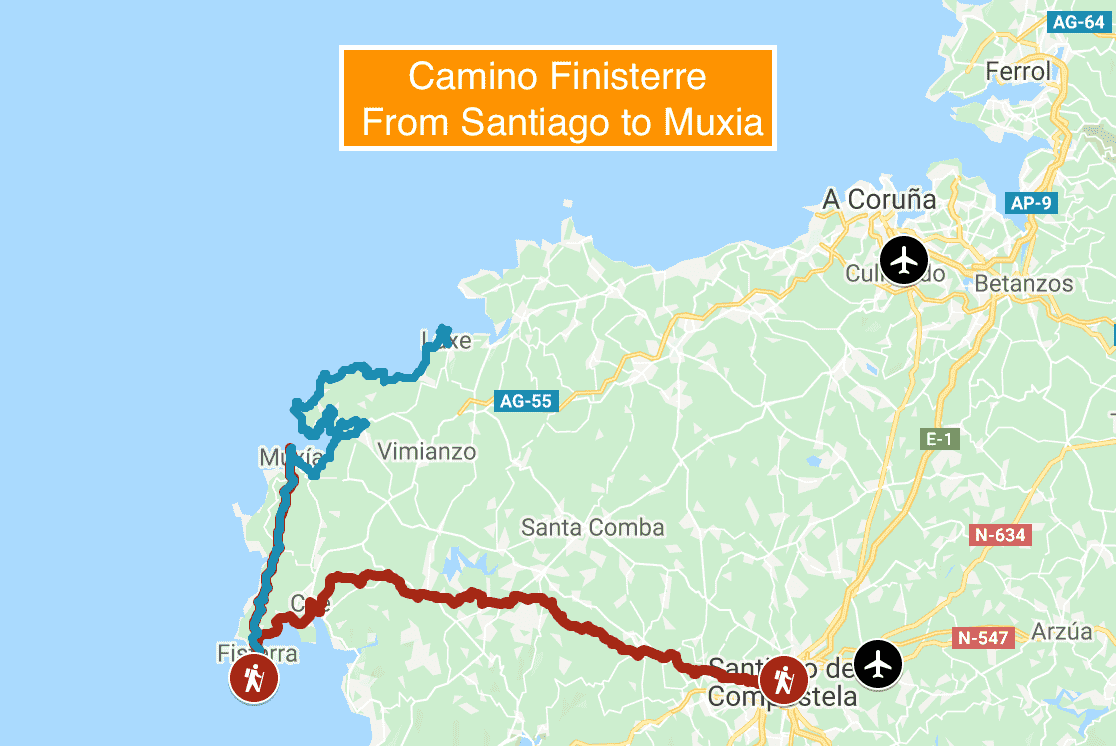
Over four days of walking, you’ll join countless pilgrims who continue beyond Santiago, drawn to the symbolic power of the ocean and the beauty of Galicia’s Costa da Morte (“Coast of Death”). In ancient, pre-Christian times, this was a sacred place where pagans came to honour the setting sun at Ara Solis, a mythical altar believed to bring the worlds of the living and the dead closer together.
Once in Fisterra, you can celebrate your journey with a swim in the Atlantic, watch the sun dip below the horizon, or visit the lighthouse at the cape, a timeless spot for reflection. For an even deeper experience, many pilgrims continue for two more days to Muxía, a picturesque fishing village known for its oceanfront Sanctuary of Our Lady of the Boat and the legendary ‘magic stones’ said to possess healing powers.
At just 90–120 km, the Camino Finisterre can be completed in under a week — but its meaning goes far beyond distance. It’s a journey of closure and transformation, where the ocean marks both an ending and a new beginning.
Why Walk the Camino Finisterre?
The Camino Finisterre is ideal if you want to extend your Camino or experience Galicia’s dramatic coastline. Walking westward feels like a natural continuation — a chance to reflect after reaching Santiago and to end your pilgrimage in silence by the sea.
It’s also a walk through myth and legend. From ancient pagan rituals to Christian traditions, this route has always been a place where earth, sky, and sea meet. Whether you swim in the ocean at Fisterra, watch the sunset from the lighthouse, or visit the Sanctuary of A Virxe da Barca in Muxía, the Finisterre Way offers an experience of closure and transformation.
Suggested Routes
Highlights of the Camino Finisterre
- Cape Fisterra – dramatic cliffs, lighthouse, and sunsets over the Atlantic.
- Muxía Sanctuary – oceanfront shrine of the Virgin and legendary “stone boat.”
- Costa da Morte – rugged coastline rich in myths and pilgrim traditions.
- Seafood villages – taste Galicia’s famous shellfish and fresh fish.
- Legends & rituals – echoes of pagan sun worship and medieval pilgrim stories.
What makes it special?
Walking to the “end of the world” is both symbolic and emotional. Unlike other routes, here you don’t just arrive — you let go: of routine, of the journey, of the self you were when you began. It’s a true Camino of reflection.
Route Options
- Santiago to Fisterra – 90 km (4 days).
- Fisterra to Muxía – +30 km (2 days).
- Reverse Camino (Muxía → Santiago) – ~120 km (5 days).
- Cycling Finisterre option also available.
👉 Browse tours: Camino Finisterre itineraries.
Certificates
While the Compostela is only issued in Santiago, pilgrims completing this route can request the Finisterrana (Fisterra) or Muxiana (Muxía) certificates as proof of their journey to the Atlantic.
👉 Read about the Finisterrana (Fisterra) or Muxiana (Muxía) certificates.
When to Go
- Best months: April–June & Sept–Oct (mild, pleasant).
- Summer: warm (avg 25°C), busy in coastal towns.
- Winter: mild but wet, fewer pilgrims.
👉 See our guide: Best time to walk the Camino.
Terrain & Difficulty
- Quiet country lanes, farmland, and forest paths leading to the ocean.
- Moderate daily distances (20–25 km).
- Mostly gentle, with some hilly sections near the coast.
👉 Prepare with our Camino Fitness Plan.
Camino Ways Route Planner
For over 1000 years, pilgrims from all over the world have walked the Camino Ways across Europe in their quest for spirituality. Making the pilgrimage to Santiago de Compostela in Spain, they encountered a variety of people, cultures and beliefs, leading to friendship and new experiences. This continues today with the Camino de Santiago being the most well known and well-loved walk in the world. More than just a walk, the Camino de Santiago is an unforgettable and unique journey for the body, mind and soul.
History & Legends
The Camino Finisterre predates Christianity. Ancient peoples believed Cape Fisterra was where the sun died into the ocean and where the worlds of the living and dead met. Rituals, offerings, and myths surrounded this sacred headland, known as Ara Solis, the altar of the sun.
From the 12th-century Codex Calixtinus to medieval travelogues, Fisterra and Muxía appear again and again in pilgrim stories. Legends tell of the Virgin Mary arriving in Muxía on a stone boat to encourage Saint James, and of pilgrims burning their clothes in ritual purification at the ocean’s edge.
Today, the Camino Finisterre keeps alive this blend of pagan, Christian, and cultural traditions, making it one of the most symbolic journeys in Europe.
👉 Read more: History of the Camino de Santiago.
Camino Made Easy
With CaminoWays, you enjoy:
- Handpicked coastal hotels & guesthouses
- Luggage transfers between stages
- Detailed maps, notes & 24/7 support
👉 Explore Guided Tours or Self-Guided Tours.
What To Bring On The Camino Finisterre?
Our Camino packing guide ebook is free to download. This will help you decide what to bring on your Camino.
Camino Finisterre Route Description
Santiago de Compostela to Finisterre over 4 days
You can continue your Camino de Santiago adventure by heading west from Santiago de Compostela to Fisterra, the end of the world! The quiet Finisterre Way, part of the famous Camino de Santiago, the Way of Saint James, is the only one of the Camino routes that starts in Santiago. The Camino Finisterre passes through quiet villages, remote farmland, and unspoiled landscapes before reaching the sea cliffs of the westernmost point in Spain, at Cape Fisterra.
Finisterre to Muxia +2 days
After Fisterra, the trail follows the stunning craggy coastline of Atlantic Galicia to the fishing village of Muxía. This beautiful region of Galicia is known as Costa da Morte, the ‘Coast of Death’, and Fisterra (Finis Terrae) was once considered to be the end of the world! See Santiago to Muxia.
FAQs
What is the Camino Finisterre?
The Camino Finisterre is a unique pilgrimage route that starts in Santiago de Compostela and heads west to Cape Fisterra, once believed to be the “end of the world.”
How long is the Camino Finisterre?
The Camino Finisterre is about 90 km and takes 4 days to walk from Santiago to Fisterra. Extending to Muxía adds another 30 km (2 days).
Can I get a Compostela certificate for the Camino Finisterre?
No. The Compostela is only issued for routes ending in Santiago. However, pilgrims walking to Fisterra or Muxía can request a special “Finisterrana” certificate.
When is the best time to walk the Camino Finisterre?
The best months are April–October, when the weather is mild and pleasant. Winters are wet, and summers are mild but busier.
What are the highlights of the Camino Finisterre?
Highlights include Cape Fisterra’s dramatic cliffs, the sanctuary of Muxía, seafood in Galician fishing towns, and centuries-old legends of the “end of the world.”
Final Word
The Camino Finisterre is more than an extension of the Camino — it’s a pilgrimage to the edge of Europe, where land meets sea and myths meet reality. For many, it’s the most meaningful way to end their Camino: not at the cathedral, but watching the sun disappear over the Atlantic.
👉 If you’d like a personalised Camino Finisterre itinerary, try our Award Winning Camino Planner.
